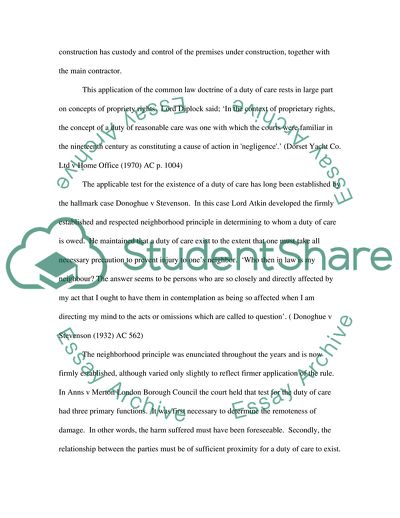Cite this document
(Potential TORT Liabilities of Parties Essay Example | Topics and Well Written Essays - 2250 words, n.d.)
Potential TORT Liabilities of Parties Essay Example | Topics and Well Written Essays - 2250 words. https://studentshare.org/law/1705047-discuss-the-potential-tort-liabilities-of-parties-mc-main-contractor-and-pma-project-managerarchitect-in-a-construction-context-describing-the-necessary
Potential TORT Liabilities of Parties Essay Example | Topics and Well Written Essays - 2250 words. https://studentshare.org/law/1705047-discuss-the-potential-tort-liabilities-of-parties-mc-main-contractor-and-pma-project-managerarchitect-in-a-construction-context-describing-the-necessary
(Potential TORT Liabilities of Parties Essay Example | Topics and Well Written Essays - 2250 Words)
Potential TORT Liabilities of Parties Essay Example | Topics and Well Written Essays - 2250 Words. https://studentshare.org/law/1705047-discuss-the-potential-tort-liabilities-of-parties-mc-main-contractor-and-pma-project-managerarchitect-in-a-construction-context-describing-the-necessary.
Potential TORT Liabilities of Parties Essay Example | Topics and Well Written Essays - 2250 Words. https://studentshare.org/law/1705047-discuss-the-potential-tort-liabilities-of-parties-mc-main-contractor-and-pma-project-managerarchitect-in-a-construction-context-describing-the-necessary.
“Potential TORT Liabilities of Parties Essay Example | Topics and Well Written Essays - 2250 Words”. https://studentshare.org/law/1705047-discuss-the-potential-tort-liabilities-of-parties-mc-main-contractor-and-pma-project-managerarchitect-in-a-construction-context-describing-the-necessary.


